A chicken ordinance was passed in Ann Arbor in 2008, allowing residents to keep up to four hens in their backyards for the first time. Happily, residents of Ann Arbor began building coops and transforming their backyards into a haven for their chickens. The popularity of backyard chickens has continued to grow. As of December 2016, 22 permits for backyard chickens had been issued, already rising above the 14 that were issued in 2015. Early in 2015, the number of chickens allowed went from four to six, delighting those who already had them and instilling curiosity in many who have never had chickens.
Michigan Flower Growers’ Cooperative Brings Local Flowers to the Table
In the middle of the growing season in 2017, something brand new sprouted in Ann Arbor. Grown with care, the Michigan Flower Growers’ Cooperative was founded on July 5, 2017, and ran through the rest of the growing season with great success. Now, they’re approaching their second year of bringing locally-sourced flowers to southeast Michigan, serving everyone from local flower shops to DIY brides to individual consumers with beautiful blooms.
The State of Bees
Imagine a living thing that has an effect on almost every food you eat. It also plays a role in the trees you see, the weeds you pull, and the coffee you drink each morning. Our entire ecosystem would be radically changed if these beings were to disappear. Bees are the tiny, hard working, often pesky pollinators that so graciously play a part in maintaining the delicate ecosystem we share. We need them, desperately, to be able to do their job: pollinate.
Yoga: Not for Women Only
I am settling into my breath. I am on my mat, in a yoga class, lying down before it begins. Eyes closed, I hear the door open and several pairs of feet pad their way into the warm room. When I finally sit up and glance around, I see I am surrounded by women — where are all the men?
DROUGHT Juice: Cold-Pressed and Home Grown
The James sisters file in one by one, and Jenny, 29, the first to sit down, begins nibbling on a cookie and happily chattering away. All of the sisters are tall and dark haired, with an infectious energy about them that extends naturally to their business, DROUGHT Juice, the successful raw juice company based out of metro Detroit.
Is Yoga Having a Moment? 12 Local Yogis Lean In to the Question
In recent years, yoga has grown exponentially in popularity. Instead of being a niche activity it’s part of the mainstream. It’s become normal, even outside of places like Ann Arbor, where yoga has had a strong community for years. We talked to 12 yogis from in and around Ann Arbor to take the temperature of the yoga community right now.
Sitara Bird — Detroit's Instagram Yoga Sensation On Staying Connected
By Chelsea Hohn | Photos by Joni Strickfaden
Sitara and her partner, Tim Shellabarger
A young, mermaid-esque woman walks into a coffee shop in Ferndale, Michigan. Her blonde dreadlocks intertwine with beads laden throughout, floating around her head like a messy halo. Accessories adorn every limb. Jewelry hangs from her nose in several places, bracelets accentuate her wrists, and elaborate tattoos peek out from her clothes.
To many, Sitara Bird’s uncommon beauty might catch their attention, but to her 34,000 followers on Instagram she’s instantly recognizable. Her frequent posts illustrate a life well lived. Her color-saturated photos, videos of yoga sequences, and still-life photos of healthy and beautifully arranged food provide vignettes of her life to the thousands of people who interact with her on a daily basis. Their essence captures her presence, calm yet powerful.
Her Instagram is a source of inspiration to her followers, who interact with her through the main form of communication on Instagram: comments. Thousands take a moment to write sentiments expressing their appreciation and encouragement.
““Everyone always says you find yoga when you’re supposed to find yoga, and it found me right when I needed to find it.””
Similar to her appearance, her Instagram account feels like an extension of herself. She presents something alluring yet seemingly effortless, and has the innate ability to bring out the best in others.
Now 26 years old, Sitara Bird started practicing yoga when she was 19, in Clinton Township, and took her yoga teacher training in 2010. She now teaches yoga in the Detroit Metro Area, especially at the Citizen Yoga studios in Detroit and Royal Oak. When I asked her how yoga found her, she replied, “Everyone always says you find yoga when you're supposed to find yoga, and it found me right when I needed to find it.” I couldn’t help but think her Instagram feed was helping others in search of finding their yoga connection.
Sitara Bird first took a liking to Instagram because she found it was easier to control what she sees on her feed. It occurred to her that this medium was ideal for sharing her story and inspiring others. It was also a match for her interests in yoga and photography. Now she posts about once a day; she has no quota but posts often enough to keep a regular following.
The rise of social media has coincided with a growing subculture of people who go online to have inspiration translate into life away from a screen. Sitara Bird’s elegant tributes to yoga and healthy eating have put her at the forefront of the followers who champion this lifestyle.
It seems her 34,000 followers is evidence she’s doing something right. The conversation she’s generating is at the nexus of yoga teachers, practitioners, clothing brands, and festivals that are integral to the modern yoga community. Yoga brands have begun to work in step with social media stars by creating contests within Instagram. Yoga festivals draw attendees by having similarly well-known names and Instagram personalities teaching at them. And for teachers like Sitara, it’s meant connecting with new students all over the world.
Many of modern yoga’s media stars are women in their 20s and 30s, with a range of yoga experience, but, at its heart, the movement seems to share similar intentions. It’s a positive community, one that for the most part includes members who share encouraging comments and act as catalysts for trying a new yoga pose or getting centered. Hashtags have also made it easy for people to connect around similar ideas, helping to spread inspiration by illustrating variations on a theme.
But to some, taking yoga to social media can seem like a step backward. Taking part in social media often comes from a very ego-ridden place; with users judging themselves and others through the process of likes and views. It’s easy to be deceived by appearances and distracted from real life.
With this in mind, I asked how Sitara Bird could use social media as a tool to spread or gain positivity without getting caught up in praise or rejection. She explained that it’s a challenge, and a building of awareness. “I kind of view my Instagram account as a journal,” she said. “People ask me, ‘How can you post yoga photos and it not come from an egotistical place?’ I know my intention is to share my story, and from the feedback I receive I know that it’s working.”
Using social media as a journal and a place for self expression keeps the intention real for her. Though it is also important to her to remember that social media is not real life.
Putting value on something that isn’t real, such as likes and followers, is a dangerous path that many users of social media go down. Commenting on this, Sitara Bird asked, “If the Internet broke tomorrow, then what would you do, where would you find your happiness?”
But not everyone has the detachment down. Many people use social media as a way to put value on themselves and get sucked into questioning their self-worth. With the positivity emanating from Sitara Bird’s community of followers, their connection is an antidote to this. Sitara Bird keeps the balance by keeping real face time.
“That’s more important and more fruitful and more filling for your soul than posting a picture, and the problem with social media is it creates this broader, more expansive bridge — you don’t see people talking anymore,” she said. “I think keeping real face time is important, and keeping yourself in check.”
Keeping yourself in check can mean questions of authenticity. For Sitara Bird, she tries to keep her page as authentic as possible. Social media is a place that can be easily crafted to convey a certain image, one that often leaves out emotions and experiences like pain, suffering, and loss. She finds there’s often a gap between what people experience everyday and what they choose to share. But she likes to write about her personal experiences, and says that when she is open and expresses her thoughts she gets the most gratitude from followers. It’s what inspires her to keep sharing.
Instagram as a format for connection has a great potential to change lives, if users can also remember to get the face time that is necessary. In the yoga realm on Instagram, this means getting on the mat, and for millions, the formal yoga challenges to do a certain pose or achieve a daily goal, and sharing your progress, have become wildly popular. Joining together to practice can be a wonderful reminder of why yoga appealed to them in the first place as well as a way for people to start a habit they would like to keep.
It’s also a place for businesses and opportunists like Sitara Bird to make connections and further themselves. She uses Instagram in part as a business endeavor and in part as a way to show potential students what her yoga practice is like. Even if it’s been inadvertent, Sitara Bird’s social media presence has become a brand, enabling her to become a participant at festivals, a teacher at large events, and a yoga retreat leader with Citizen Yoga.
The balance between using Instagram as part of her journey as a yogi and using it for business is another challenge she has to manage. Fusing a practice that is focused around letting go of the ego into a medium that celebrates the self is tricky enough. I asked her, “Does adding a layer that is growing a personal brand dilute the original purpose of spreading the gift of yoga?”
“Not necessarily,” she said. Her approach to social media is genuine, and she uses it as a way to spread the gifts she receives from yoga. But it is also how she builds her brand and works as an entrepreneur. She acknowledges how others might see the conflict in that. She also encourages people to evaluate social media’s potential for reinforcing best practices, as the community voices their alarm when authenticity is lacking. Negative feedback can motivate people to change course for the better.
““If the Internet broke tomorrow, then what would you do, where would you find your happiness?” ”
For her next endeavor, Sitara Bird is making videos, available online, so anyone around the world can practice with her. Her vision is to use her success on Instagram to bring people to her website.
It’s a strategy that works. With a captive audience, an account featuring beautiful photos like Sitara Bird’s can grab attention and attract new customers to studios, brands, and events and improve opinions. Like with any other aesthetic-based medium though, the quality and appearance of the photos matter. Attention to detail and an eye for design can go far, as it has for people like her, so if you’re a business owner considering this strategy, get a design-oriented person to lead the job.
So many people take to social media as a means to change their life, looking for a source of inspiration that will catapult them into new habits, but Sitara Bird encourages people to notice the conversation we have with ourselves.
“Notice the conversation you have with yourself in your own head, that’s where it starts,” she said. “You want change — it starts there first, it’s not outside of you, it’s not looking at something through a phone — it starts inside of you.”
For more information about Sitara Bird, learn about her on her website www.sitarabird.com. To see her on Instagram, go to instagram.com/sitarabird/.
Related Content:
Eve Aronoff's Frita Batidos — Continuing to Bring Cuban Culture to Ann Arbor Five Years After Opening
By Chelsea Hohn | Photos by Susan Ayer
A flurry of trays bursts through a tiny door into the dining area of Frita Batidos, the Cuban-inspired restaurant created by Eve Aronoff. Everything is white — the painted brick walls, the picnic tables, the floors — but the room is vibrant. It’s a Wednesday night, and every single picnic table is full of guests. Pops of color come from the food and drinks around the room and mesh bags filled with limes used as accents for each table. Music fills the rare holes in conversation, and a shuffle of college students, families, and tourists add to a line that is quickly approaching the back of the restaurant.
The staff at Frita Batidos moves full speed ahead to manage the flow, all while maintaining a steady hand and calm demeanor. This is what happens when a restaurant is managed with the precision and specification of chef and owner Eve Aronoff. She has carefully fostered this environment of “artful chaos” since opening the restaurant in 2010.
And things haven’t slowed down. The traffic has steadily grown since Frita Batidos opened its doors, and the staff (some of which who have been there since the first year) have adapted, never compromising the quality of the service or food. Not surprisingly, Frita Batidos has become an Ann Arbor staple.
The restaurant was largely inspired by Aronoff’s love of Cuban culture and passion for taking care of people — a philosophy that was instilled in her as a young child. It was also about creating something special and personal, and cultivating not just a sense of community, but a genuine community that starts with the restaurant staff and extends to the guests. Attentiveness to detail is equally important to Aronoff, whether it’s making sure her ingredients are top quality and locally sourced or maintaining Frita Batidos’ characteristic spirit and playful atmosphere by bringing in elements of Cuba.
Aronoff fell in love with Cuban culture after spending time in Miami and wandering through the many food markets there. Continuing to follow her curiosity, she read more and more about the country’s culture and history. She stumbled upon the “frita” and the “batido” separately, but the “frita,” which was described as a burger made with chorizo and shoestring fries, seemed like a most delicious fit with the “batido,” a blended shake-like beverage.
“Those two together sounded amazing to me,” said Aronoff, “and I thought, Frita Batido…. Frita Batidos!” she laughed, pointing out that it isn’t even grammatically correct. The name stuck, though, and her mind had already been made up — before she had even tried either dish.
It wasn’t until a month before Frita Batidos was set to open in 2010 that Aronoff tried fritas for the first time when she traveled to Miami to conduct taste testing. “I went with my mom and we ate eight fritas that day,” she said. But they were much different from what she was expecting. Traditionally, the frita is served on a grocery store hamburger bun (a far cry from the homemade brioche that she serves at her restaurant), and is topped with potato sticks and American cheese. The whole burger was much saltier than she imagined it would be. “I thought, I’m really glad I didn’t try this years ago because I probably wouldn’t have pursued this,” she said with a laugh.
But Frita Batidos isn’t a traditional Cuban restaurant, and it isn’t shy about that. The menu is really more about Aronoff’s impression of the culture and how it has influenced her personal style of cooking in imaginative ways.
The spirit of Cuban culture made the biggest impression on Aronoff, and she’s brought that into the space of Frita Batidos through small and playful details. The communal tables, for example, encourage conversation between guests and often spark conversations among strangers. Guests can also play a game of dominoes, the national game of Cuba and an activity commonly played across parks in Miami.
The ordering window at Frita Batidos is also an attribute that was inspired by Cuban culture, where guests customarily order through an open window at restaurants. For Aronoff, this was a must-have feature for Frita Batidos. She admitted that in Michigan the window doesn’t get as much use as she would like it to, but it’s these type of details that have become the defining elements of Frita Batidos’ charm.
When creating the restaurant, Aronoff also thought back to one of her first jobs — working as a hotdog vendor at Fenway Park in Boston. The convivial nature of that job was quite different from what she experienced while receiving formal training at Le Cordon Bleu in Paris. She finally realized with Frita Batidos that she could bring all of these things together. “The spirit of the hotdog car, the attention to detail, the passion I have about food and taking care of people, the way I was brought up — bringing those together to create their own thing — that’s Frita Batidos.”
Another practice she took to the restaurant’s kitchen was something she learned in childhood. Aronoff grew up with a mother who loved to cook, and in a way that often resulted in Aronoff trying more food than she ended up eating. At Frita Batidos, any dish being made has to be tasted by at least two other people than the person who’s making it — again, creating an inclusive environment even in the back of the house. She also caught on to her mother’s caring spirit, after seeing the joy she would get from taking care of her children. Aronoff recalled that if she and her siblings all wanted four different dinners, her mother would make four different dinners. If all of them finished and were still hungry, another dinner would be on the way. If she was sick, her mother would call and ask what she wanted — “Richie Rich comic books and tomato soup,” she laughed. Her mother’s care ended up being the biggest culinary influence for Aronoff.
Running a successful restaurant is difficult enough, but for one that values customer service, food quality, culture, and sustainability in the way that Frita Batidos does, challenges must be met with a certain amount of creativity.
“We know what our values are. We see how close we can come to that without [ignoring] the practical concerns we have as a restaurant, and just keep trying to work to get closer and closer to meeting those values,” Aronoff explained. Their values are hardly compromised, which only adds to the number of struggles that come with having high standards. In addition to sourcing locally for ingredients, all of their utensils are from Green Safe Products in Detroit, added the kitchen manager, PJ Johnson.
Sourcing locally means supporting local agriculture, but small farmers have to sell produce at a higher price point, resulting in a higher price for menu items. “You have to find a way for guests to appreciate that and understand why this might be a little more expensive but still be a great value for all the different kinds of taste,” said Aronoff.
Even space can be a challenge; the Frita Batidos kitchen is tiny, and there is only one door. “Everything comes in the front door and out the front door,” Aronoff laughed. They have added onto the kitchen since opening, and the workflow has become much smoother, and they continue to fine tune the processes as they go along. This is part of what Aronoff thinks makes a good chef and what’s necessary to run a successful restaurant. Being open to critiques and using them to create positive change is part of the daily life at Frita Batidos, from listening to customer feedback to having weekly staff meetings that build community within the restaurant.
“Is there any way we can make it a little bit brighter in here?” a woman sitting at one of the many tables inside of Frita Batidos asks one of the servers. He politely says yes, and within a few minutes the lights slightly brighten. The woman goes back to the group she’s with and continues to eat.
Cultivating a community in a small space takes more than just sandwiches and the right décor — it takes dedication to creating that atmosphere and making it the foundation around which everything else is built. Aronoff and her team make a point to build a staff that shares similar values — people who are passionate and view paying attention to details as rewarding rather than burdensome, and people who generally enjoy taking care of others. Frita Batidos successfully bridges the gap between high quality food and an informal setting, while managing to support local agriculture and uphold an environment where guests feel comfortable asking one another to pass the salt. It is no wonder the line frequently extends towards the back of the restaurant.
“This is where I take people when they come in from out of town,” one man says as he devours a plate of fries. Meanwhile, another guest walks in.
Frita Batidos is located at 117 W. Washington Street, Ann Arbor, Michigan 48104. You can view the menu on their website at www.fritabatidos.com.
From Dawn to Dusk: 12 Notable People in Ann Arbor’s Body/Mind/Spirit Community Share Their Daily Rituals
Our daily rituals, traditions, practices, and exercises — while personal and involved for some are simply a way to live for others. Rituals can keep us sane, keep us honest with ourselves, and keep us going, whether we are aware of it or not.
Love, Health, and Possibility ~ The Kombucha of Unity Vibration
Barrels line reflective colorful walls, and a scent of vinegar hangs in the air. Eccentric cut-outs collaged together create a welcoming and calm atmosphere. Tucked neatly in a corner of Ypsilanti is the warehouse that houses the successful kombucha beer company Unity Vibration and its Triple Goddess Tasting Room.











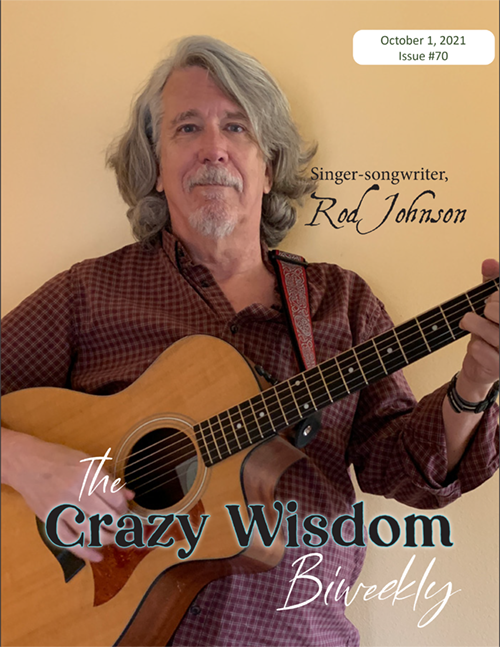
































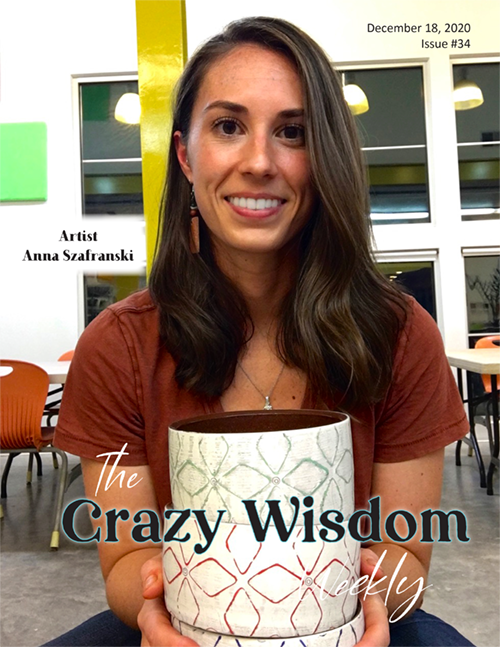














































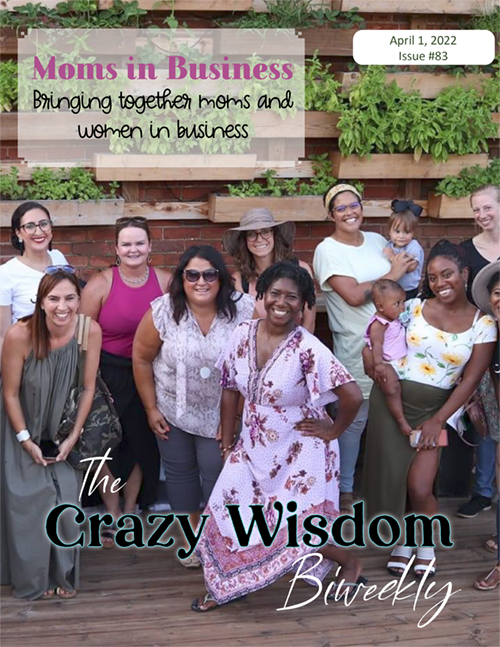







































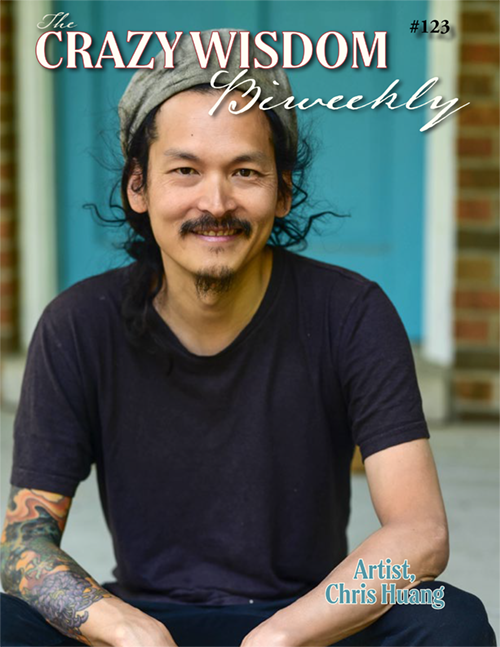






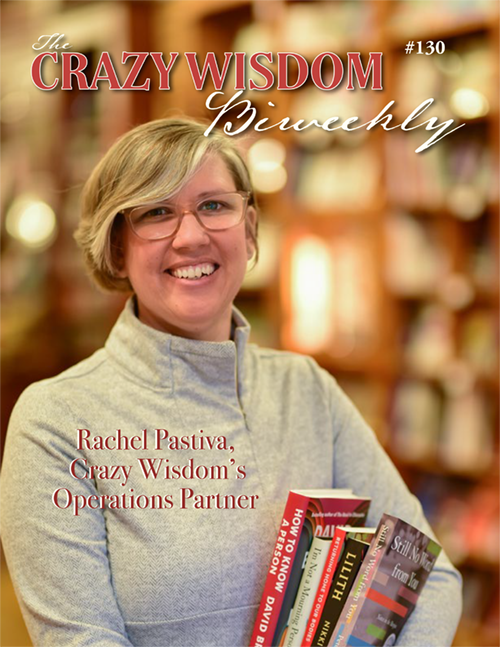





































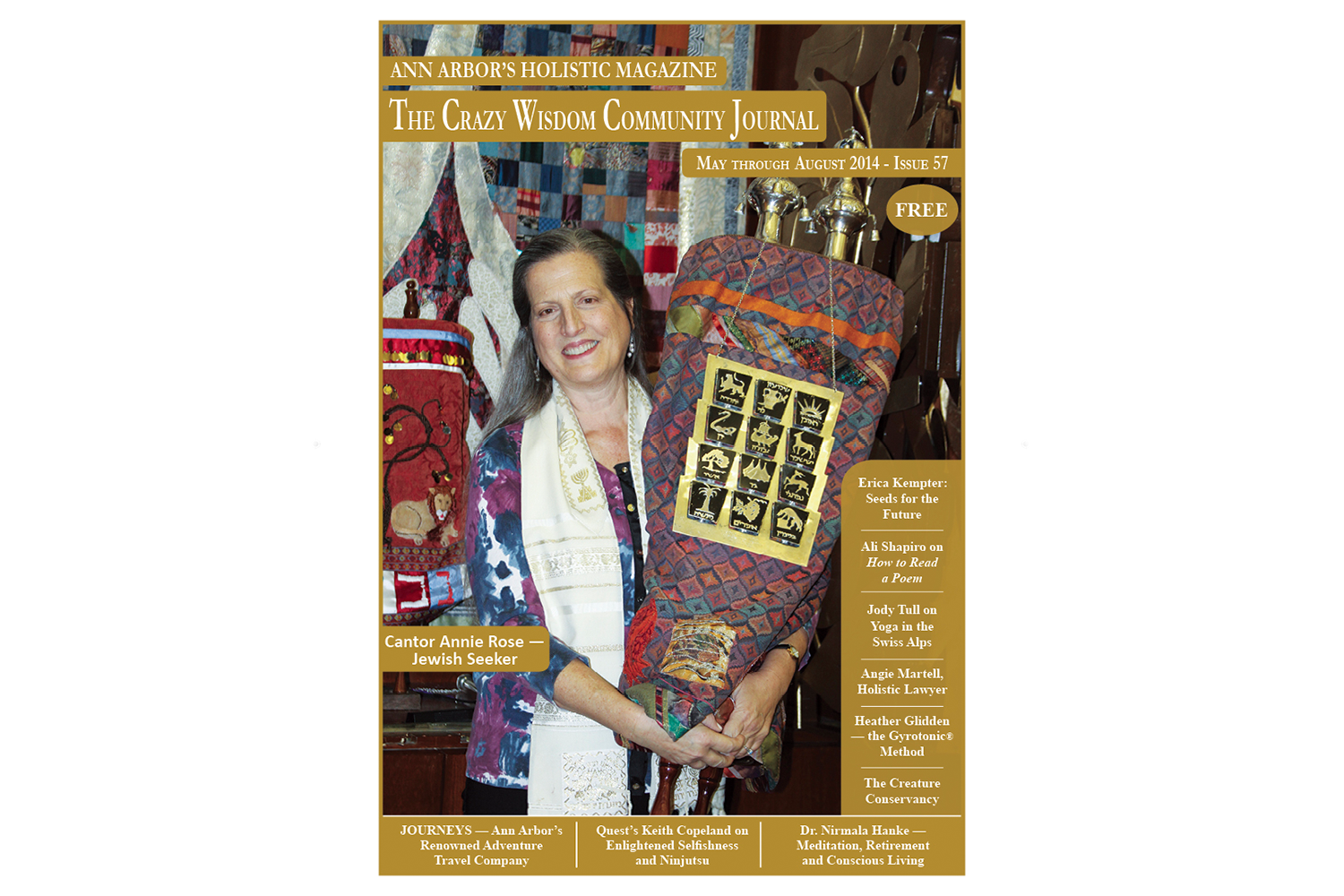
















For the last 15 years, in the early morning between five and eight, the 200 block of South Main Street has filled with yoga practitioners who come and go before the town comes to life. It’s a diverse group, ranging from those in their teens to those in their 80s, across all sorts of life situations and physical capacities. The yoga they practice is tailored to the individual. Depending on the person, the practice might include various physical asanas, breathing techniques, and meditations. What they all have in common is that they’re all part of a school, and a community organization, called Ashtanga Yoga Ann Arbor.